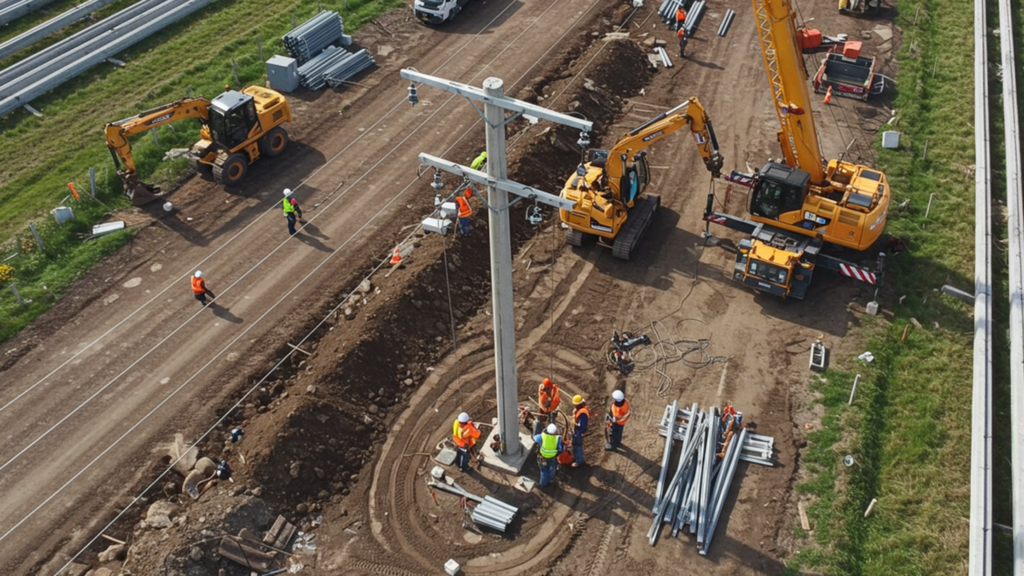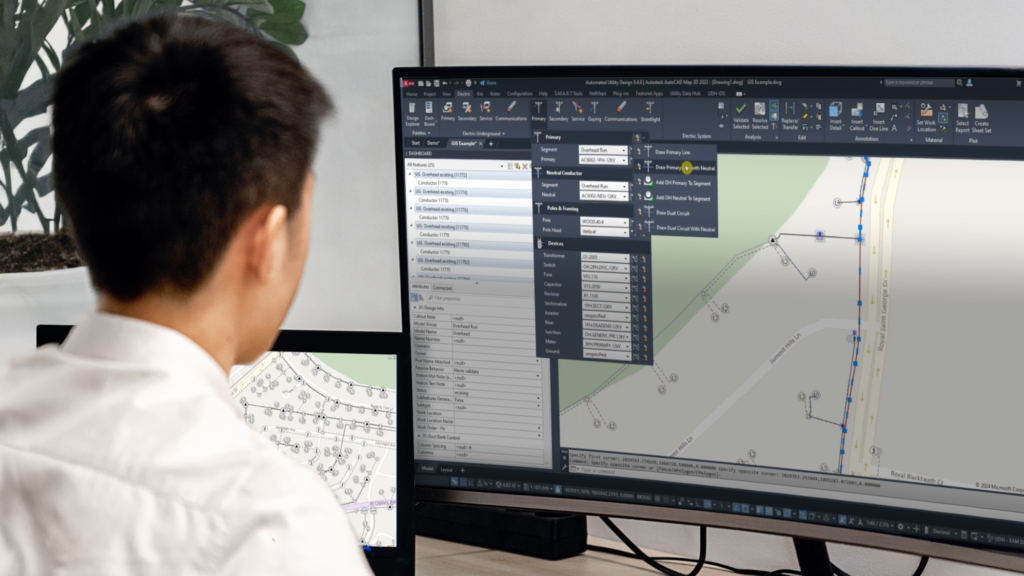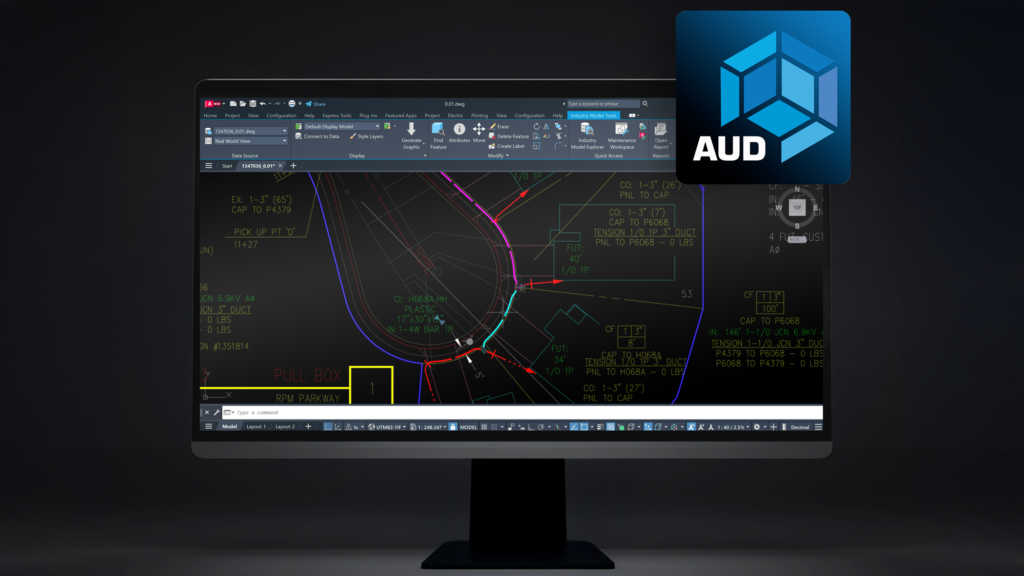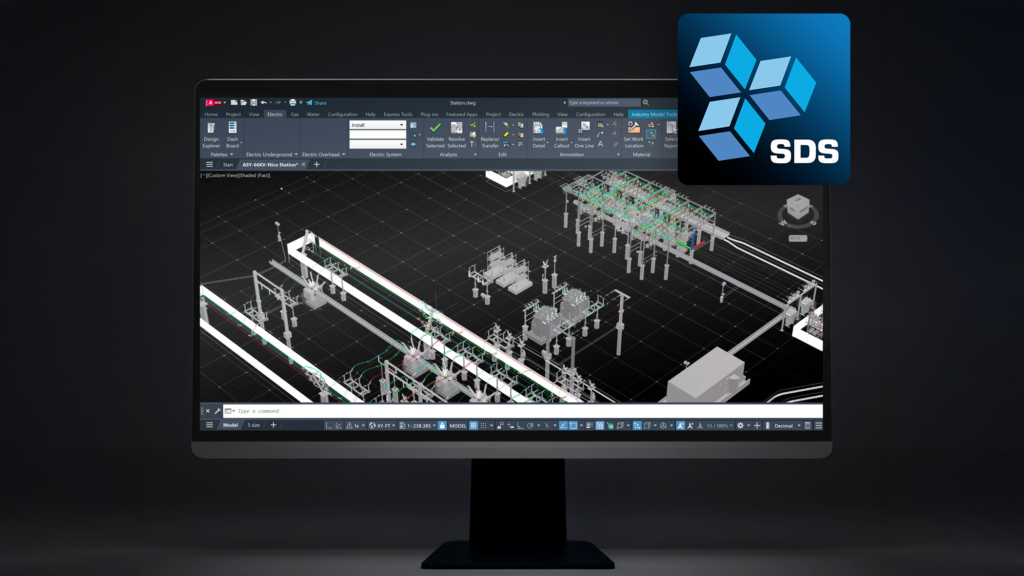Design Drives Value for Digital Utilities
The demand for electricity continues to surge as the modern world increasingly relies on it as a primary energy source. In the first half of 2024 alone, the United States added 20.2 GW of generating capacity—a 21% increase over the previous year—with an additional 42 GW expected by year-end, according to the U.S. Energy Information Administration. Utilities are navigating this expansion while integrating renewable energy, maintaining aging infrastructure, and addressing the capital planning challenges posed by the growing presence of data centers, electric vehicles, and rising household energy consumption. These demands, coupled with evolving regulations and a workforce nearing retirement, make this one of the most complex periods in the history of energy infrastructure management.

Accelerating the Digital Transformation of Utilities with Intelligent Design
In the rapidly evolving utilities sector, the role of design has become more critical than ever. As companies face growing workloads, regulatory changes, and an aging workforce, using integrated and automated design solutions can drive significant improvements in efficiency, cost savings, and operational reliability. Spatial Business Systems (SBS) is at the forefront of this transformation, offering cutting-edge design software and integration solutions that bridge the gap between engineering, asset management, and GIS.

Verify designs against engineering standards at the point of design, not afterward, and automate design tasks and bills of material generation.
The Role of Design in the Digital Utility Era
Effective design orchestrates data across the enterprise, allowing utilities to build faster, better, and with greater efficiency. However, traditional design approaches often fall short due to disconnected workflows, redundant data entry, and inefficiencies in updating operational systems. By adopting an integrated, model-based design approach, utilities can streamline their operations, improve compliance, and reduce project costs.
Automated Utility Design (AUD): A Game-Changer for Networked Infrastructure

AUD, a software platform developed by SBS, revolutionizes utility infrastructure design by seamlessly integrating CAD-based drafting with GIS and Enterprise Asset Management (EAM) systems. As a plug-in for AutoCAD Map3D, AUD eliminates redundant work, improves design accuracy, and significantly reduces rework and project cycle times. Key benefits include:
- Improved Productivity: Through automation and model-based design, AUD enhances efficiency and reduces manual data entry by up to 95%. This allows more design work to be completed faster with fixed design resources.
- Reduced Field Rework: AUD virtually eliminates cost overruns with integrated workflows built for modern construction project delivery processes. More accurate construction packages and integrated procurement processes lead to a 90% reduction in field corrections.
- Faster Project Updates: Model-based design tracks changes at the model level, and cascades changes and updates downstream without duplicate data entry and multiple drawing revisions. Projects can then be implemented 50% faster, ensuring projects stay on track.
- Cost Savings: Utilities using AUD report a 5–10% reduction in overall project costs due to streamlined design and reduced errors.
- Accelerated Training: AUD is operated in the familiar AutoCAD interface and automates complex design workflows. New designers reach productivity 80% faster, resulting in significant workforce efficiency gains.
By bridging CAD and GIS environments, AUD enables utilities to optimize their design workflows and seamlessly transition from planning to construction, improving compliance and reducing operational disruptions.
Substation Design Suite (SDS): Enhancing Substation Engineering

Substation design presents unique challenges due to the complexity of physical and protection & control (P&C) systems. SBS’s Substation Design Suite (SDS) addresses these challenges by integrating intelligent design tools with CAD environments, enhancing accuracy and reducing project cycle times. Key advantages of SDS include:
- Automation and Standardization: SDS improves design quality through configurable engineering standards and compliance checks, automating the compliance review process and saving significant design time.
- Enhanced Project Timelines: Moving to model-based design with SDS accelerates project timelines, with SDS customers reporting project timelines improving by 20–50%.
- Cost and Error Reduction: With manual data entry and duplicate drawing production nearly eliminated, field errors and change orders are cut by up to 75%, leading to major cost savings.
- Faster Design Iterations: Like AUD, model-based design in SDS tracks changes at the model level, and cascades changes and updates downstream without duplicate data entry and multiple drawing revisions, improving responsiveness to project modifications y up to 50%.
- Scan-to-BIM workflows: Brownfield projects get through the design phase faster, improving project timelines and reducing overall project cost.
With a model-based approach, SDS simplifies substation engineering, ensuring better collaboration and faster design-to-construction transitions.
The Future of Digital Utility Design
As utilities continue their transition toward a more digital future, integrating intelligent design platforms like AUD and SDS will be critical in maintaining efficiency and sustainability. By using automation, data integration, and streamlined workflows, utilities can build more resilient and cost-effective infrastructure, ready to meet the demands of a rapidly evolving energy landscape.




